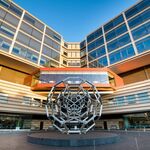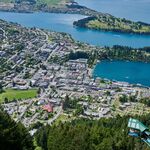Steve X
Senior Member
Don't get me started on the old Borough of York. That place is a mess in rush hour. Keele disconnect, Trethewey, Rogers Rd to just name a few. The Crosstown can't open fast enough taking buses off Eglinton plus they need to aggressively tow all the illegally parked cars between 4-6pm. That stretch between Keele and Caledonia has zero enforcement. Caledonia to Dufferin westbound, people start parking right at 5:45pm even though the ban ends at 6pm. All the traffic spills onto Castlefield and Caledonia.Montreal has the advantage of a better grid system in a more urban area, with the next parallel arteries being only one-km away, while it's two kilometres to Lawrence and St. Clair - neither of which are continuous east of Bayview or Mount Pleasant.
The 47B/C is never on time. Once the crosstown opens, all the 47A riders on Lansdowne gets to enjoy increased reliable service as all 47's will head to Caledonia Station. I don't know how the new 164 Castlefiled will even function with that massive gridlock. Expect reliability be low and will eventually ended up on the chopping block. The 121 Fort York-Esplanade was expected to carry a lot of riders but ended up chopped as gridlock traffic made it useless. I expect the 164 will end in the same fate.
Scarborough chose to built wider roads as many East-West corridors have 3 lanes. It really helps traffic flow and could be easily converted to RapidTO lanes without causing massive gridlock. The grid is better there. I don't think the city needs to widen some corridors to create boulevards to address the traffic flow. People can take transit build the increased delivery of goods and construction vehicles can't. Gridlock will continue to hinder productivity and increase cost for everyone.







